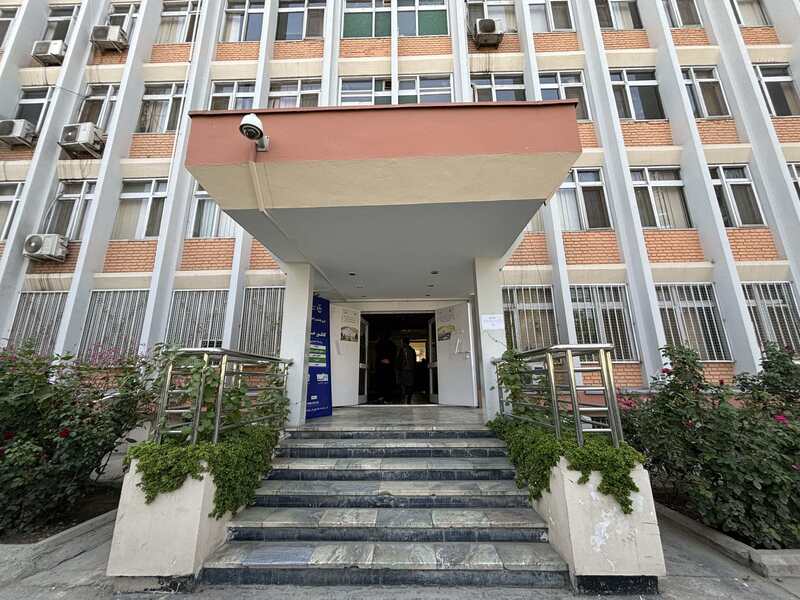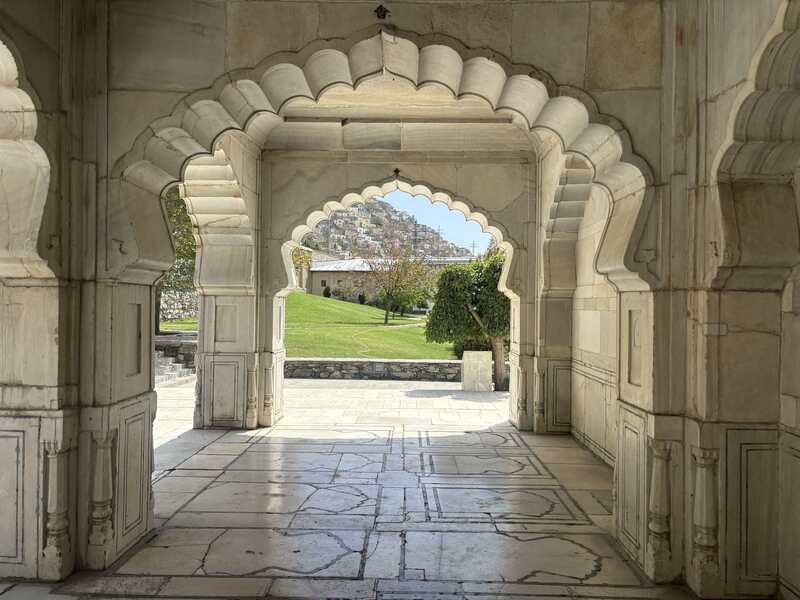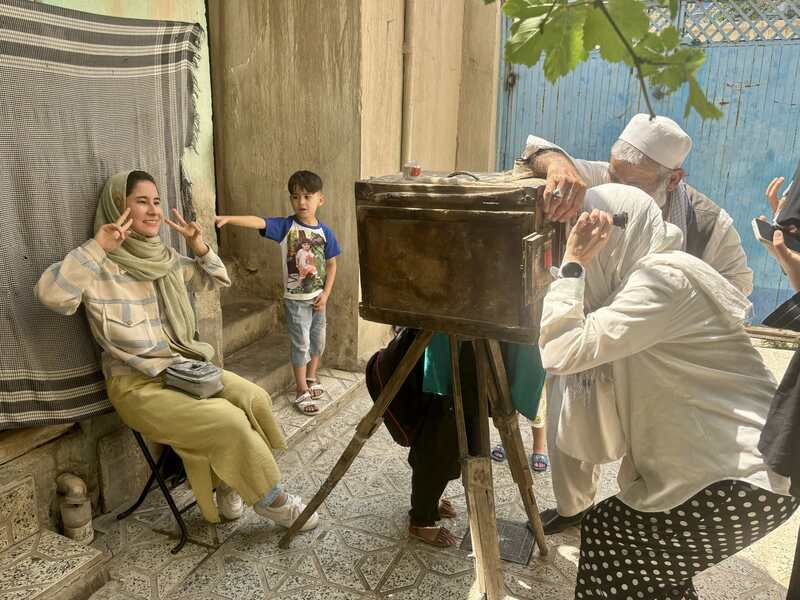A Guide to Kabul, Afghanistan's Capital City
Kabul is the capital and largest city of Afghanistan.
It serves as a central hub for political, economic, and cultural activities in the country.
Let's take a deep dive into Kabul, Afghanistan's capital city.
Kabul Introduction
Kabul Geography & Climate
Kabul History
Kabul Demographics
Kabul Economics
Visiting Kabul
Where to Stay in Kabul

Visit here for your Afghanistan permits in Kabul
Introduction to Kabul
Situated in the eastern part of Afghanistan, Kabul is a city with a rich history that spans over 3,500 years.
Not just in the present day, but it has been a significant centre for trade and culture throughout history. It was influenced by various civilisations, including the Achaemenids, Mauryans, and Mughals.
What's in a Name?
The name "Kabul" is believed to have ancient origins, potentially derived from the Sanskrit word "Kabul," meaning "to give" or "to grant."
Other theories suggest it could have links to the Persian word "Kabul," which refers to "the place of the sun."
The city’s name has evolved. The changes reflect its diverse cultural influences and the many civilisations that have passed through the region.
Geography and Climate of Kabul
Kabul is located in a narrow valley at an elevation of approximately 1,800 meters (5,900 feet) above sea level.
It is surrounded by the picturesque Hindu Kush mountain range.
Kabul city is situated about 150 kilometres (93 miles) from the Pakistani border.
It has hot summers and cold winters.
Summer temperatures can exceed 30°C (86°F), while winter temperatures often drop below freezing, sometimes reaching lows of -10°C (14°F).
Rainfall is limited, with the majority occurring from late winter to early spring, leading to dry summers.
History of Kabul
Kabul in the Ancient Period
Kabul has been inhabited since at least the 2nd millennium BCE.
It was an important city along the ancient Silk Road, connecting traders from the East to the West.
The region was ruled by various empires, including the Achaemenids, who incorporated Kabul into their vast empire in the 6th century BCE.
Alexander the Great also passed through Kabul, establishing it as a Hellenistic city.
Kabul in the Islamic and Medieval Periods
With the advent of Islam in the 7th century, Kabul became a key centre for Islamic culture and learning.
It was part of various dynasties, including the Samanids and the Ghaznavids.
During the 13th century, the city experienced devastation during the Mongol invasions led by Genghis Khan.
In the 16th century, Kabul became a vital region of the Mughal Empire under Emperor Babur, who recognized its strategic importance. Babur built the famous Bagh-e Babur (Babur's Garden), which remains a historical site today.
Kabul in the Modern Era
In the 19th century, Kabul was at the centre of the Great Game, a political struggle between the British and Russian empires.
The First Anglo-Afghan War (1839-1842) resulted in British control over Kabul, but it was followed by a bloody uprising leading to their withdrawal.
In the early 20th century, under King Amanullah Khan, Kabul underwent modernisation efforts, including reforms in education and infrastructure.
However, the latter half of the century saw instability, including the Soviet invasion in 1979, followed by years of civil war and Taliban rule.
Kabul Today
Kabul today is a bustling hub. It is the point of entry for many international visitors to Afghanistan. From here, you can take local transportation and flights to most regions in Afghanistan.
Demographics of Kabul
Kabul is one of the most populous cities in Afghanistan, with an estimated population of around 4.5 million people.
And you can tell. Its cities are hectic and busy with lots of traffic, especially at rush hour.
The city is ethnically diverse, comprising various groups, including Pashtuns, Tajiks, Hazaras, Uzbeks, and others.
Pashto and Dari (a dialect of Persian) are the primary languages spoken.
The population of Kabul has increased significantly since the early 2000s due to internal migration, driven by conflict and economic opportunities.

babur gardens in kabul
Economy of Kabul
Kabul serves as the economic heart of Afghanistan, with a diverse economy that includes trade, services, agriculture, and small-scale manufacturing.
The city’s strategic location makes it a vital trade hub, connecting Afghanistan to neighbouring countries, particularly Pakistan.
Trade (Bazaars in Kabul)
Kabul’s economy relies heavily on trade, with markets and bazaars bustling with activity. Major commodities traded include textiles, carpets, fruits, and nuts. The city has several commercial centres, where local businesses and international companies operate.
Popular bazaars for tourists to visit include the famous Chicken Street.
Agriculture
Agriculture remains a significant sector in Kabul, with surrounding areas producing fruits, vegetables, and grains.
The region’s fertile soil and irrigation systems contribute to agricultural productivity, although challenges such as water scarcity and insecurity impact this sector.
International Aid and Development
Kabul's economy has also been supported by international aid and investment, particularly following the U.S.-led intervention in 2001. Various NGOs and international agencies operate in the city, focusing on development projects in education, healthcare, and infrastructure.
Visiting Kabul
Where to visit in Kabul?
Kabul is a busy, large, hectic city. Expect to be spending a lot of time in the car if you are visiting. The traffic can get very bad!
It's crowded and dusty. And to be honest, there are a lot better places in Afghanistan than just Kabul! So it's a great place to visit and a great place to get you to other areas around the country.
National Museum -
Cost: 300 including taking photos (100/200).
Details: Museum housing collection of artefacts that trace the country's history from ancient times to the present. Most of the really wonderful items have now been moved to a safer location.
Darul Aman Palace -
Cost: 500 per person. Details: A neoclassical building originally intended to house the future parliament. A gorgeous palace and palace grounds.
Notes: Local women are not permitted to enter here.
Babur Gardens -
Cost: 350 per foreigner, 30 locals.
Details: Historic park and the final resting place of the Mughal emperor Babur. The gardens feature terraced lawns, a series of small pools, a variety of plants, and a small museum showcasing artefacts from the Mughal period. Locals come here to relax and have BBQ and tea.
OMAR Land Mine Museum -
Cost: 500 per person.
Details: The Organization for Mine Clearance and Afghan Rehabilitation. Houses 51 out of 53 different types of land mines, are currently working to de-mine Afghanistan, and do great educational work throughout the country.
Definitely worth the visit. The museum and tour itself is amazing. There are exhibitions outside and inside, and they’re also an ‘education centre’ where school children go on a Monday and Wednesday (would be great to plan around this). It’s well integrated into the museum as you sit in the “classrooms” (one is inside an old Russian helicopter and the other inside a plane) and they talk you through all the good work they’ve been doing and what they are trying to achieve. They do a lot of great work in the communities, too. Overall a great experience.
Box Camera Photographer -
Cost: From 2,000 per photo.
Details: Haji Mir Zaman is a renowned local photographer known for his captivating images of Afghan landscapes and culture, and for being the last box camera operator in Afghanistan. Notes: An experience! But an expensive one. This equipment surviving what it has done is a miracle, and he’s teaching his practice to his sons and grandsons. You go to his house/studio which is in a secluded part of town and can spend a while here.
Chicken Street / Market -
Cost: N/A Details: Also called Antique Alley. Famous for its shops selling Afghan antiques, jewellery, carpets, and handicrafts.
Notes: Nice place to walk around in the evening. It’s a ‘tourist’ market for sure but is located conveniently right next to the hotel and an opportunity for people to get some local clothing upon arrival.
Wazir Akbar Khan Hill & Giant Flag & Viewpoint -
Cost: 50 per car. Details: Wazir Akbar Khan Hill is famous for its viewpoints overlooking the city and big Taliban flag.
Notes: 30 mins here max. Great view of Kabul, not far from the hotel and The Cafeteria restaurant. Giant flag..! One of those ones you have to tick off.
Ka Faroshi Bird Market & Straw Alley-
Cost: N/A Details: Various different kinds of birds are being sold as well as different straw-based products. Notes: Didn’t visit here as birds in cages not my thing but it’s a must-see and quite the experience.

Haji Mir Zaman Box Camera Operator, Kabul
Infrastructure in Kabul
Transportation - Getting Around Kabul
Kabul has a network of roads and highways connecting it to other major cities in Afghanistan, including Kandahar and Mazar-i-Sharif.
The Hamid Karzai International Airport serves as the primary airport, providing domestic and limited international flights.
Public transportation options include taxis, buses, and rickshaws, although road conditions can vary significantly. Infrastructure improvements are ongoing, supported by both the Afghan government and international partners.
Where to Stay in Kabul
Hotels in Kabul - Expensive
1. Serena Hotel Kabul
- Location: Shahr-e-Naw, Kabul City Centre
- Approximate Cost: $150 - $250 per night
- Overview: A symbol of luxury and comfort, the Serena Hotel is one of Kabul’s most well-known hotels, favoured by international visitors and diplomats.
Located in the heart of Kabul, it offers a wide range of amenities, including a fitness centre, swimming pool, and several fine dining options. The hotel’s serene atmosphere and high level of security make it an ideal choice for those looking for comfort and peace of mind.
2. Intercontinental Hotel Kabul
- Location: Khair Khana, Northern Kabul
- Approximate Cost: $100 - $200 per night
- Overview: Known for its elegant design and spacious rooms, the Intercontinental Hotel Kabul is a longstanding favourite among international guests. Set atop a hill, the hotel offers stunning views of the city and the surrounding mountains.
While the hotel is relatively large and well-equipped, it offers a quieter and more relaxed atmosphere compared to the Serena.
Hotels in Kabul - Mid-range
3. Kabul Star Hotel
- Location: Pul-e-Charkhi Road, Eastern Kabul
- Approximate Cost: $40 - $60 per night
- Overview: If you're looking for a budget-friendly option without sacrificing too much in terms of quality, **Kabul Star Hotel** is an excellent choice. Located in a quieter part of Kabul, this hotel offers basic but comfortable accommodations, with clean rooms and friendly service.
While it may not have the luxury amenities of the more expensive hotels, it offers a good value-for-money option for travellers on a budget.
4. Afghania Guest House
- Location: Pul-e-Charkhi Road, Eastern Kabul
- Approximate Cost: $30 - $70 per night
- Overview: Located literally opposite the Iran Embassy and right next to Kabul Star Hotel, which is a very expensive 5* hotel. Probably a good thing as you can benefit from the extra security (there are 3 guards outside there at least). The hotel has heavy security with an armed guard and heavy iron gates.
It’s located in the wealthiest part of town, and there are lots of shops and restaurants around, as well as the famous Chicken Street (the next street on from it). It’s only recently opened and is already the go-to for travellers recently.
Hotels in Kabul - Budget
5. Kabul Guesthouse
- Location: Shar-e-Naw, Kabul
- Approximate Cost: $20 - $40 per night
- Overview: For those looking for a more homely experience or travelling on a very tight budget, the Kabul Guesthouse provides affordable, no-frills accommodation.
Located in the heart of Kabul, it offers basic rooms with shared facilities.
Though simple, the guesthouse is known for its friendly staff and welcoming environment, making it a popular choice for backpackers or those staying for a longer duration.

